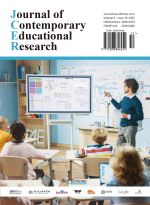Application and Trends of Artificial Intelligence in Special Education: A Case Study of Autistic Children
Abstract
With the rapid development of artificial intelligence (AI) technology, its application in special education has demonstrated great potential for enhancing educational effectiveness and promoting inclusivity. This article explores the current applications and future trends of AI in special education settings from a human-computer interaction perspective, with particular focus on children with autism. The paper first outlines the transition from universal computer-assisted education toward AI-driven specialized interventions that meet the personalized needs of special education students. Through research cases applying affective computing systems, speech recognition technology, and large language model tools for children, it illustrates how AI enables personalized learning and real-time feedback. Finally, the article prospects future directions for AI in special education, emphasizing human-centered approaches to support the comprehensive development of learners with special needs.
References
Kulik JA, Fletcher JD, 2016, Effectiveness of Intelligent Tutoring Systems: A Meta-Analytic Review. Review of Educational Research, 86(1): 42–78.
Davis P, Florian L, Ainscow M, et al., 2004, Teaching Strategies and Approaches for Pupils with Special Educational Needs: A Scoping Study, University of Bristol.
Odom SL, Thompson JL, Hedges S, et al., 2015, Technology-Aided Interventions and Instruction for Adolescents with Autism Spectrum Disorder. Journal of Autism and Developmental Disorders, 45, 12: 3805–3819.
Yang YQ, Chen LB, He WM, et al., 2024, Artificial Intelligence for Enhancing Special Education for K-12: A Decade of Trends, Themes, and Global Insights (2013–2023). International Journal of Artificial Intelligence in Education, 2024: 8.
Parsons S, Cobb S, 2011, State-of-the-Art of Virtual Reality Technologies for Children on the Autism Spectrum. European Journal of Special Needs Education, 26(3): 355–366.
Andreeva A, Lekova A, Tsvetkova P, et al., 2024, Expanding the Capabilities of Robot NAO to Enable Human-Like Communication with Children with Speech and Language Disorders, Proceedings of the International Conference on Computer Systems and Technologies, 2024: 63–68.
Garg R, Cui H, Seligson S, et al., 2022, The Last Decade of HCI Research on Children and Voice-Based Conversational Agents, Proceedings of the 2022 CHI Conference on Human Factors in Computing Systems, 1–19.
American Psychiatric Association, 2022, Diagnostic and Statistical Manual of Mental Disorders, Text Revision Dam-5-tr, Amer Psychiatric Pub Inc, Washington, DC.
Kapp S, Gillespie-Lynch K, Sherman LE, et al., 2013, Deficit, Difference, or Both? Autism and Neurodiversity. Developmental Psychology, 49(1): 59–71.
Kenny L, Hattersley C, Molins B, et al., 2016, Which Terms Should Be Used to Describe Autism? Perspectives from the UK Autism Community. Autism: The International Journal of Research and Practice, 20(4): 442–462.
Kuoch H, Mirenda P, 2003, Social Story Interventions for Young Children with Autism Spectrum Disorders. Focus on Autism and Other Developmental Disabilities, 18(4): 219–227.
Dawson G, Carver L, Meltzoff AN, et al., 2002, Neural Correlates of Face and Object Recognition in Young Children with Autism Spectrum Disorder, Developmental Delay, and Typical Development. Child Development, 73(3): 700–717.
Hobson RP, 1986, The Autistic Child’s Appraisal of Expressions of Emotion. Journal of Child Psychology and Psychiatry, 27(3): 321–342.
Picard RW, 2000, Affective Computing, MIT Press, Cambridge, Mass.
Poria S, Cambria E, Bajpai R, et al., 2017, A Review of Affective Computing: From Unimodal Analysis to Multimodal Fusion. Information Fusion, 37: 98–125.
Harrold N, Tan CT, Rosser D, et al., 2014, CopyMe: A Portable Real-Time Feedback Expression Recognition Game for Children, CHI’ 14 Extended Abstracts on Human Factors in Computing Systems, 2014: 1195–1200.
Tanaka JW, Wolf JM, Klaiman C, et al., 2010, Using Computerized Games to Teach Face Recognition Skills to Children with Autism Spectrum Disorder: the Let’s Face It! Program. Journal of Child Psychology and Psychiatry, 51(8): 944–952.

